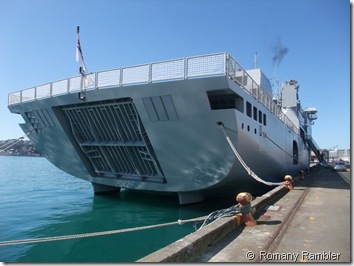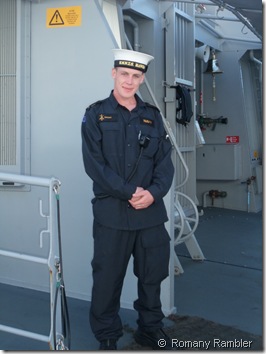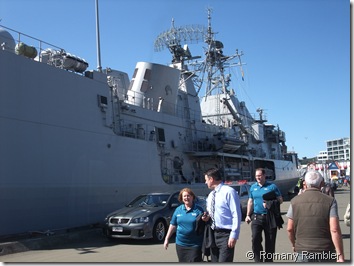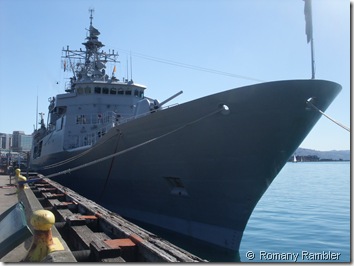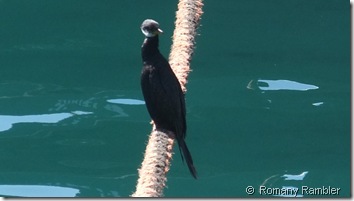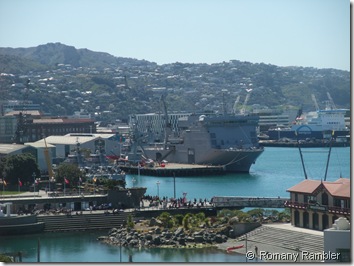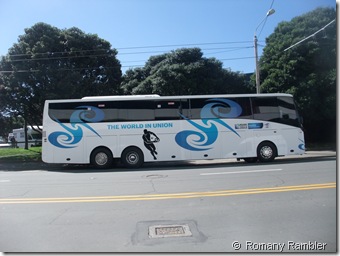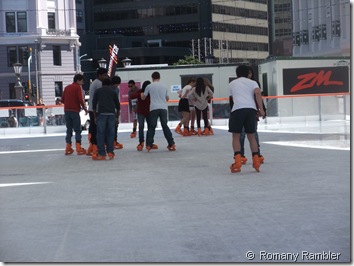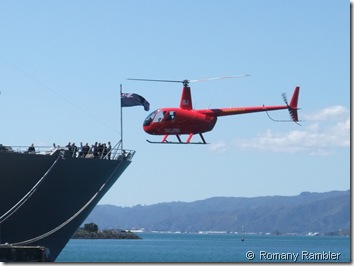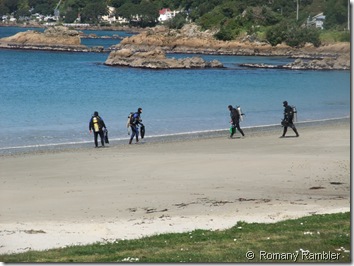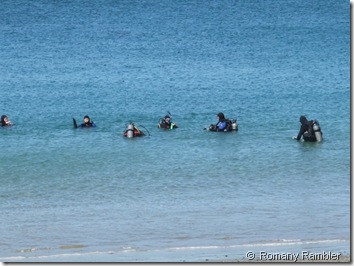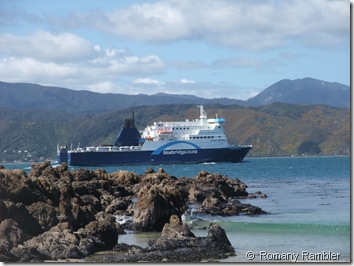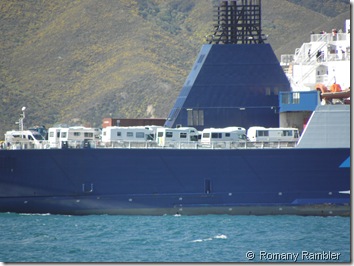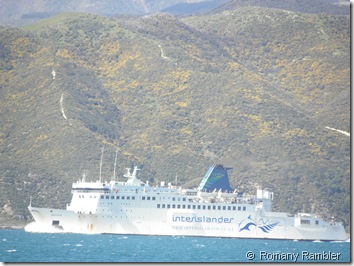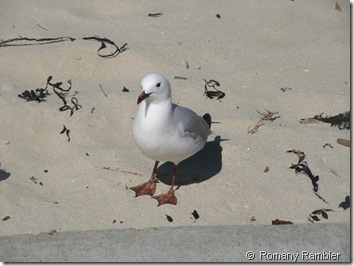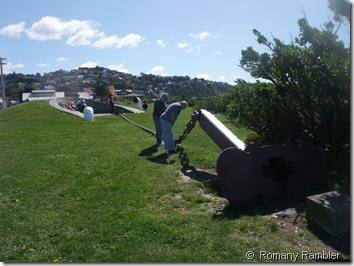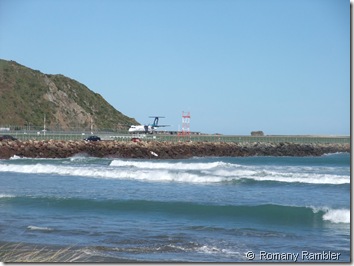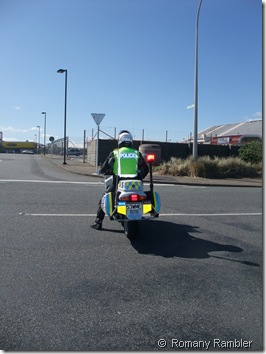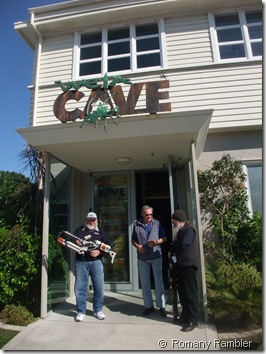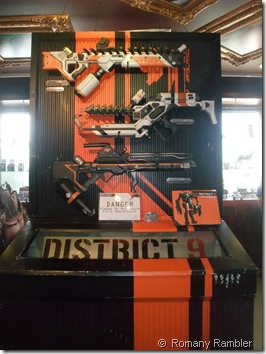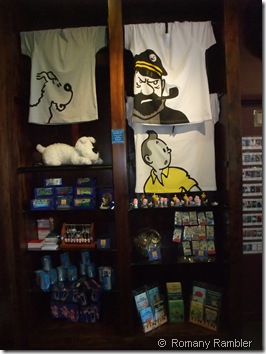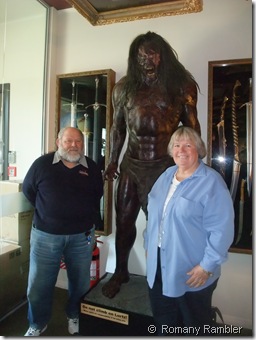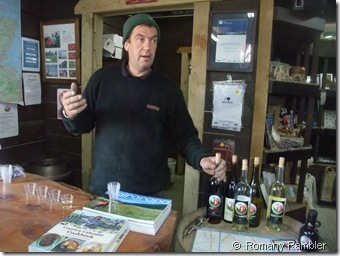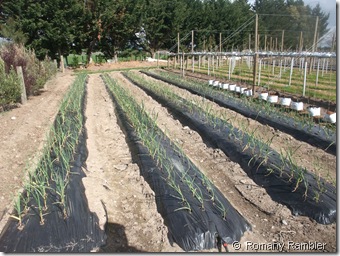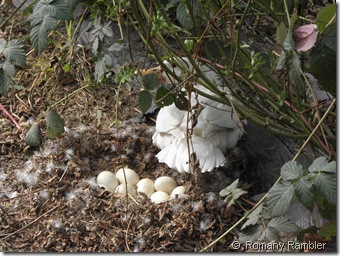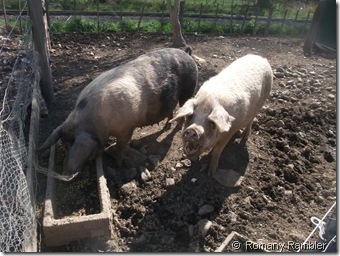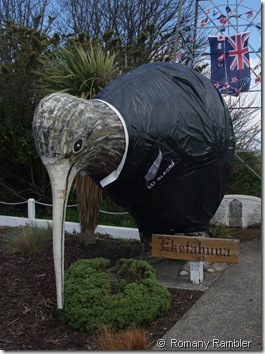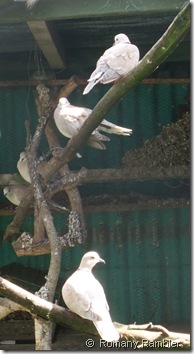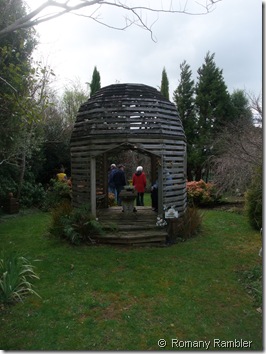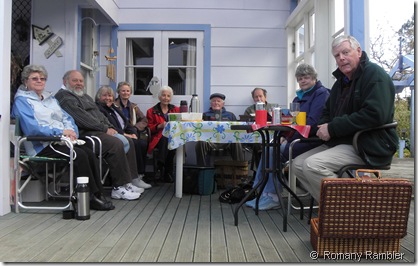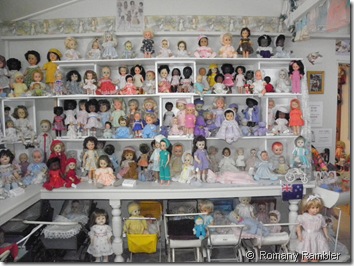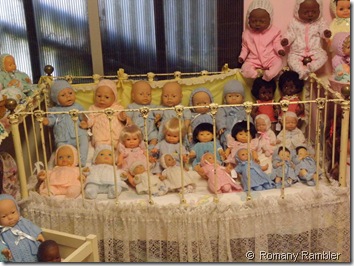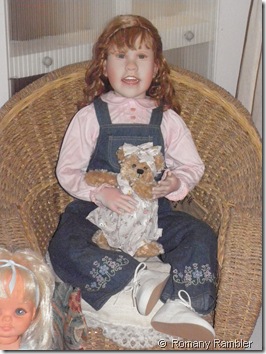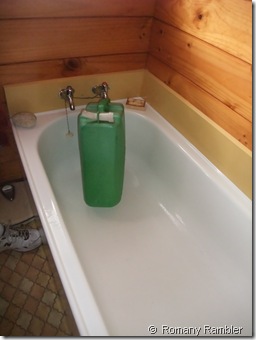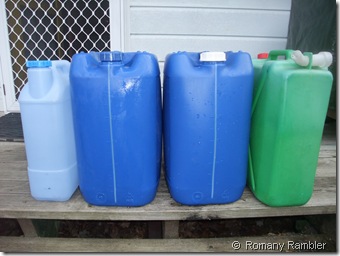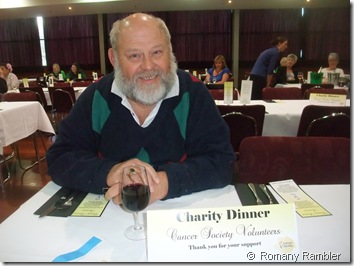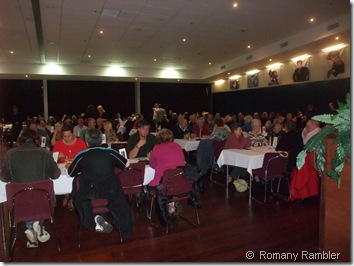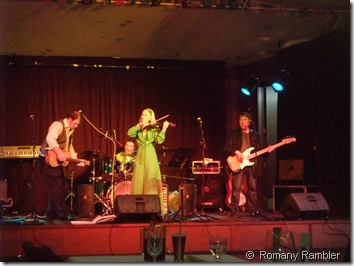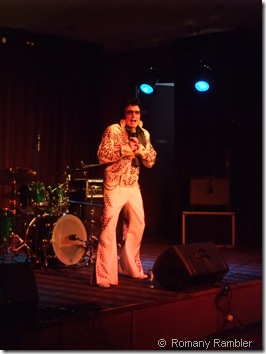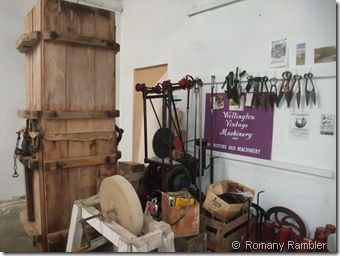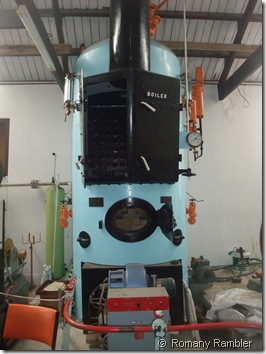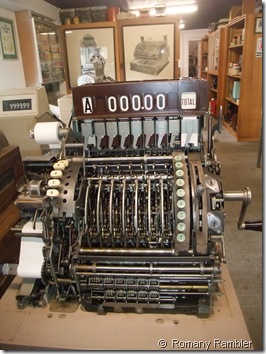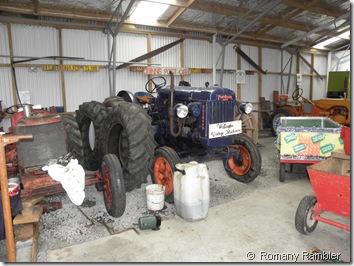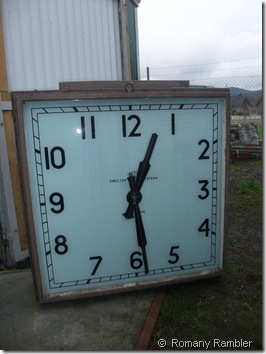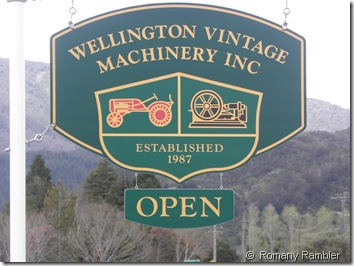Wellington Harbour was a hive of activity today as almost every vessel in the Royal New Zealand Navy has arrived in Wellington Harbour, providing a "once in a lifetime" chance to see the fleet. The fleet's arrival is part of the 70th anniversary of the Royal New Zealand Navy's founding on 1 October 1941. The ships have been practising both night-time manoeuvres and daytime exercises in Cook Strait.
Arriving in Wellington – Courtesy Chanel 3 News
The huge impressive HMNZS Canterbury was so long it almost impossible to photograph. This is a multi-purpose vessel used for military sea lift and ship to shore disembarkation of troops and vehicles. There are helicopters and landing craft on board, and training and patrol duties are undertaken.
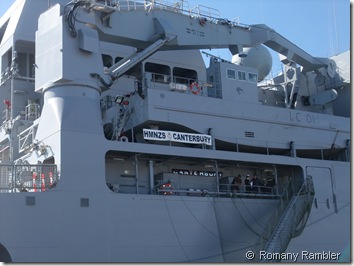
The smaller vessels Hawea and Pukaki breasted up together. These are in-shore patrol vessels which undertake fisheries and customs duties around New Zealand and the southwest Pacific. We found a young sailor aboard who patiently answered our questions about the “rigid hull inflatables” we could see on the deck.
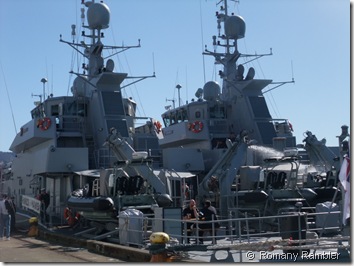
HMNZS Te Kaha is part of the combat force, together with Te Mana. These ANZAC-class frigates are armed with a 5 inch gun, torpedoes, air defence missiles, and close-in weapons systems for self defence. The frigates carry a Seasprite helicopter armed with air-to-surface missiles.
Seemingly oblivious to all the people thronging around the harbour, this sea bird was sunning itself on a rope. Our trusty bird book confirmed that this is a Little Pied Cormorant.
We left the waterfront to attend a meeting six floors up at the Amora Hotel, and enjoyed a light luncheon at the conclusion, with the mainly senior attendees making short work of the assorted sandwiches, sausages rolls and lamingtons. Looking out the hotel windows we had a birds eye view of the mighty Canterbury in the wharves below.
It was interesting to note that the French Rugby Team were staying at this hotel, and we brushed shoulders with several who were hanging around the entrance as we entered the hotel. Their team bus was parked outside, ready and waiting to whisk them away as required.
Back on the wharf again on our way back down to the station, we came across an ice skating rink which certainly was a new feature since our last visit. A large group of teenagers were having fun as they skated around. There was a large refrigeration unit keeping the ice frozen.
Our last bit of excitement for the day was watching the Rescue Helicopter come in to land on the wharf.
The Camper Van park on the wharf was doing such good business that it had a sign up saying all the sites were booked. This is such a handy spot for visitors to Wellington, as they can leave their vehicle here safely in the middle of the city and take buses or trains to get around.
The ships will be open to the public during the weekend. On Saturday, October 1, about 400 Navy personnel will parade down Lambton Quay following a ceremony at Parliament to change the Navy's Queen's Colour, a ceremonial flag symbolising the Navy's relationship with the Queen. King George VI gave approval on 1 October 1941 for the title Royal New Zealand Navy to be used. Then on Monday October 3 the fleet will anchor in formation in the harbour and the ships will be reviewed by our new Governor General Sir Jerry Mateparae. The vessels will then depart for operations in South East Asia, the Solomon Islands and around the New Zealand coast.
